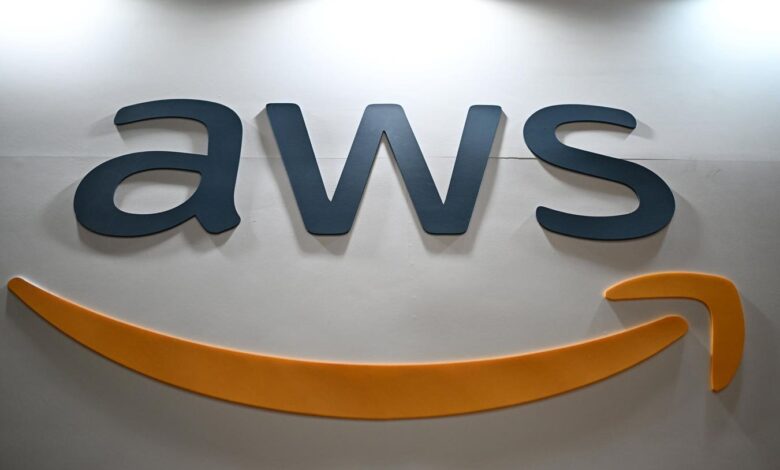AWS Has A Mission To Elevate Cloud Security

Chris Betz presented a keynote this week at the annual AWS Re:Inforce conference being hosted in … [+]
Cloud computing underpins a significant portion of global digital infrastructure, so ensuring robust security is more critical than ever. AWS is relatively synonymous with cloud services and continuously innovates to enhance its security measures.
During a recent pre-briefing with Chris Betz, AWS’s Chief Information Security Officer (CISO), he underscored this commitment. Betz shared insights into AWS’s security strategies, emphasizing the integral role of threat intelligence and the company’s deep-rooted security culture.
AWS’s Approach to Security
Betz shared that AWS’s security philosophy is centered on proactive and comprehensive protection, treating security not as an afterthought but as a fundamental component of its services. He highlighted how AWS leverages its vast infrastructure to monitor and mitigate threats at scale.
Betz explained, “We invest really deeply in the security of AWS products, recognizing that even with the most secure cloud behind them, bad actors are still trying to attack our customers.”
This investment in security infrastructure includes tools like Sonaris, designed to detect and neutralize unauthorized attempts to access AWS resources. Betz noted that AWS’s infrastructure itself acts as a sensor, providing a broad and deep view of potential threats. This capability enables AWS to respond swiftly and effectively, protecting its customers and enhancing the overall security of the Internet.
The Importance of Threat Intelligence
Threat intelligence is a cornerstone of AWS’s security strategy. By tracking and analyzing malicious activities, AWS can preemptively address threats before they impact customers. Betz provided an example of this approach with the tool MadPot, a honeypot framework that has analyzed billions of interactions with malicious actors. This analysis helps AWS to push threat intelligence automatically into AWS services like GuardDuty, AWS WAF, and AWS Shield.
The efficacy of this approach is evident in the sheer scale of AWS’s operations. An Amazon blog post revealed, “Between May 2023 and April 2024, Sonaris denied over 24 billion attempts to scan customer data stored in Amazon Simple Storage Service (Amazon S3) and prevented nearly 2.6 trillion attempts to discover vulnerable services running on customers’ Amazon EC2 virtual servers. This is a staggering amount of work that happens behind the scenes to ensure that a customer’s business continues uninterrupted.”
These figures underscore the magnitude of the threats AWS manages and the effectiveness of its proactive security measures.
The Shared Responsibility Model
A key aspect of cloud security is the shared responsibility model, which delineates the security obligations of AWS and its customers. Betz emphasized that while AWS is responsible for securing the cloud infrastructure, customers must secure their applications and data within the cloud. This model requires a collaborative approach to security, moving beyond mere compliance to a partnership aimed at collective success.
I pointed out the challenges customers face in understanding and implementing this model. Betz acknowledged these challenges and highlighted AWS’s efforts to educate customers, ensuring they understand their responsibilities and how to leverage AWS’s security tools effectively.
“Security is our top priority,” Betz affirmed, stressing the importance of preventing security issues from harming customers’ businesses.
Cultivating a Security-First Culture
Beyond technological solutions, AWS places a strong emphasis on cultivating a security-first culture. Betz described how security is embedded in every aspect of AWS’s operations, from leadership down to individual developers. He shared that AWS’s CEO and leadership team dedicate an hour each week to discuss security with various engineering teams. This practice ensures that security remains a top priority and that lessons learned are continuously integrated into AWS’s processes.
Betz also introduced the concept of the “security ratchet,” a mechanism that ensures continuous improvement in security practices. Every security lesson learned is codified into tools and processes, creating a ratchet effect where security measures only become stronger over time. This approach helps AWS to maintain a high standard of security and adapt to evolving threats.
Empowering Customers
AWS’s commitment to security extends to empowering its customers. Betz told me that by providing advanced security tools and clear guidance, AWS helps customers secure their environments and protect their data.
He also emphasized the importance of customer control, particularly in the context of generative AI and other emerging technologies. AWS ensures that customers have the tools and knowledge to safeguard their data, enabling them to innovate with confidence.
Looking Ahead
As AWS continues to innovate and expand its services, Betz assured me that security will remain a central focus.
The introduction of tools like Sonaris and the emphasis on threat intelligence and a strong security culture are all solid examples of AWS’s dedication to protecting its customers and the broader Internet ecosystem. Betz’s insights during the pre-briefing highlighted not only the current state of AWS’s security strategies but also the ongoing commitment to enhancing security in the face of new challenges.
With thousands gather in Philadelphia at AWS Re:Inforce, AWS’s comprehensive approach to security—integrating advanced threat intelligence, fostering a security-first culture, and empowering customers—sets a high standard in the cloud industry.



